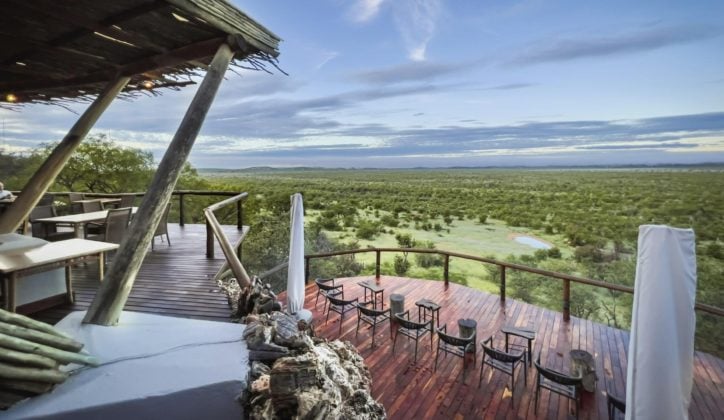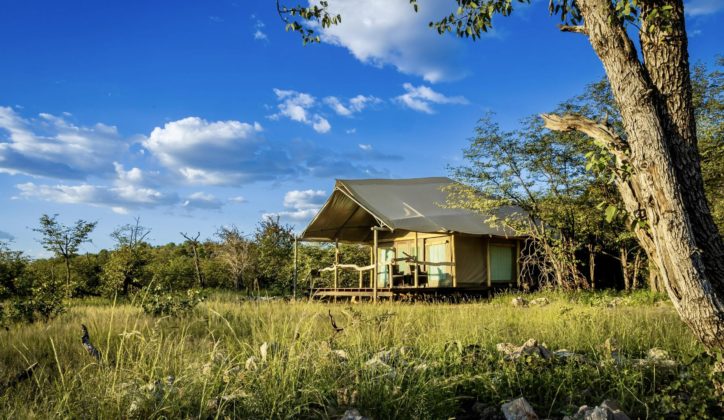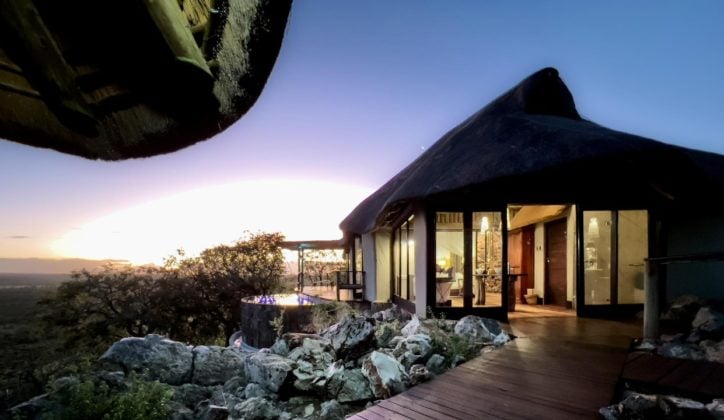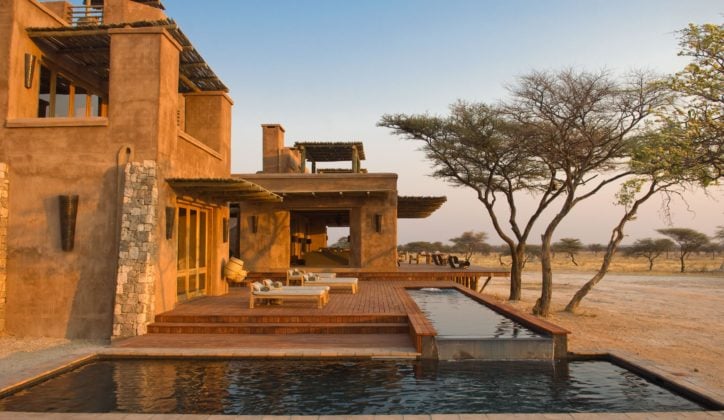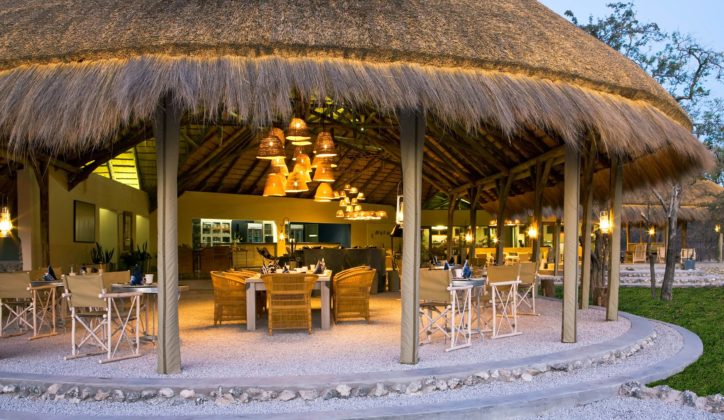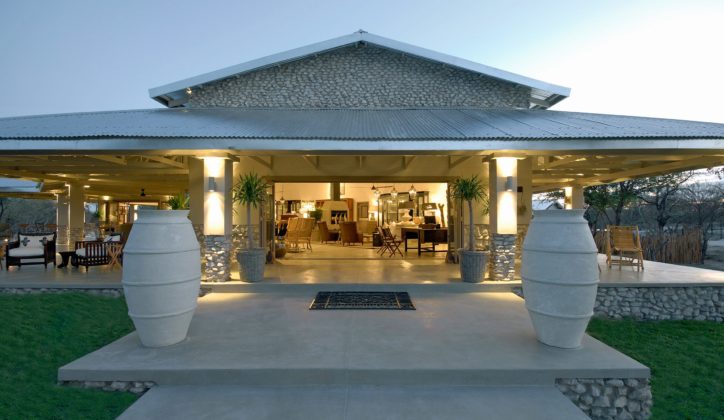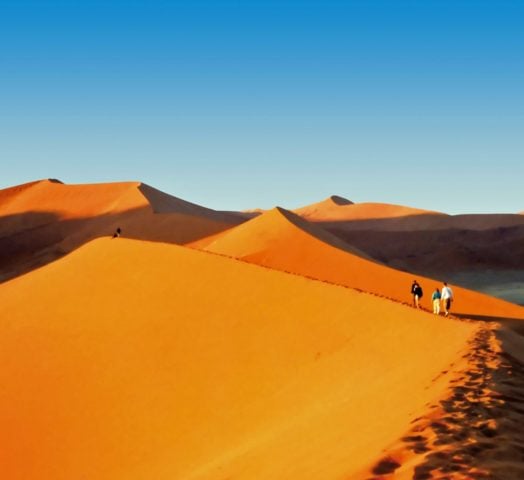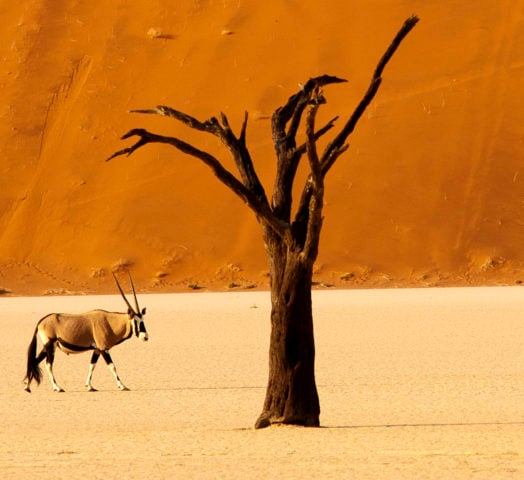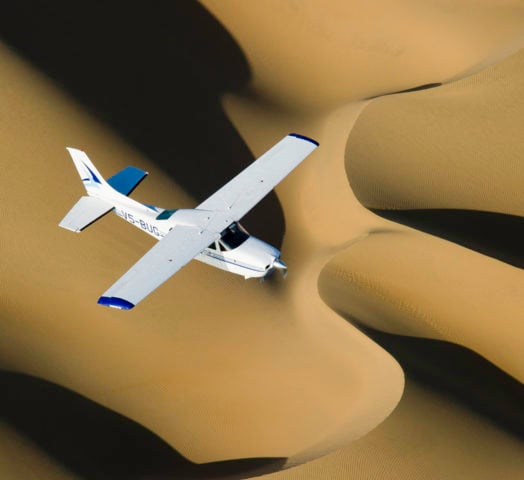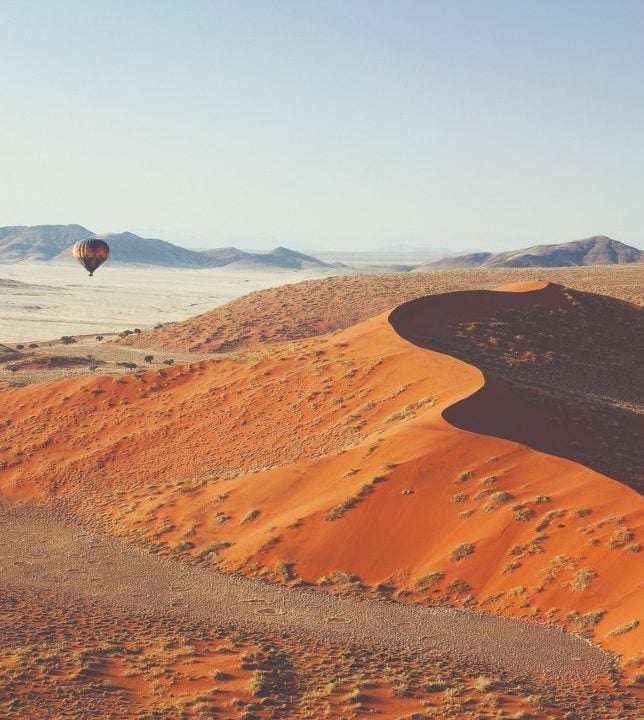Shimmering landscapes where thousands of animals converge around water sources
Etosha’s most distinguishing feature is its enormous, horizon-less silvery salt pan that it encompasses, as well as the variety and concentration of game that crowd its surrounding spring-fed waterholes.
Nicknamed the “Place of Mirages”, the terrain is extraordinary and a photographer’s delight, especially when a pride of lions, herds of blue wildebeests or desert elephants appear through the haze to stand against this stark backdrop.
The remains of an ancient inland lake, the Etosha Pan, takes up about a quarter of the park’s land and there is a variety of habitats within the park’s borders from mopane woodland to treeless plains, open savannah, becoming more hilly the further west you go.
On these dry landscapes, typical of Namibia, wildlife gathers around the limited water sources which results in great wildlife viewing. The more verdant terrain of Onguma and Ongava Private Game Reserves, to the park’s south and northeast, are perfect for intimate wildlife experiences. Most lodges we’ve chosen are in these exclusive areas, allowing day trips to the salt pan as well as their own protected areas.
Highlights
Take daily game drives around the park, discovering the wildlife and witnessing the magical mirages on the salt pans.
Go on birdwatching tours, wait in hides and marvel at the 340 species of birds that can be spotted in the park.
Spend your evenings gazing up at the stars waiting at one of Etosha’s watering holes to see which creatures will make a night time visit.
Track white rhinos on foot with expert guides while staying in the private Ongava Reserve

Jody van Merode
Senior Travel Designer






Namibia is a fantastic country to visit and Etosha National Park cannot be missed while you’re here. The game viewing is exceptional, the famous watering holes draw large densities of mixed game to the water's edge, creating a Noah’s Arc type image. There’s also plenty of great lodges to choose from and some excellent conservation projects to learn about too.

Jody van Merode
Senior Travel Designer
Luxury accommodation in Etosha National Park
Why book with Jacada?

Safari expertise
Our experts bring decades of first-hand expertise. They’ve lived and travelled across Africa and are regularly on the ground reviewing the most exclusive camps and experiences. You’ll also have the support of a personal concierge, based in region.

Unforgettable guides
We handpick the most knowledgeable guides, who bring each destination to life with care and passion. They’re chosen for their ability to provide unrivalled insight into the region’s wildlife and landscapes as well as a genuine, memorable experience.

Positive impact
By travelling with us, you directly support a range of initiatives spanning wildlife conservation to community engagement. Our luxury trips are designed to prioritise experiences that are positive for you and the places you visit.
Trip inspiration
Discover more of Namibia
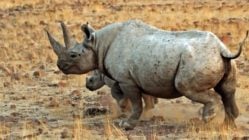
Damaraland
Damaraland is home to the open-air gallery of Twyfelfontein. Here, you will find thousands of ancient engravings made by the indigenous San people – making this UNESCO World Heritage Site a must-see in Namibia.
Discover more
Kaokoland
This is one of Namibia’s most remote and inaccessible areas. In Kaokoland, you can meet the Himba and learn about their traditional lifestyle on a cultural safari. In the region, you can also spot desert elephants, giraffes and black rhinos.
Discover more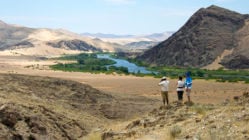
Kunene River
Flowing from Angola into Namibia, the Kunene River is the only perennial water source in the entire region. From here, embark on nature drives and boating excursions in search of Nile crocodiles. You can also venture further and explore remote mountains, river valleys and waterfalls.
Discover more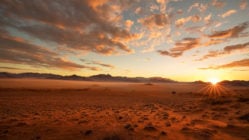
The NamibRand Reserve
As one of the largest private reserves in Southern Africa, the NamibRand Reserve aims to help protect and conserve the unique ecology and wildlife of the south-west Namib Desert. Its vast vistas make for some incredible sunset views. The NamibRand Reserve also lies in one of the darkest regions on earth, making it one of the best places to go stargazing.
Discover more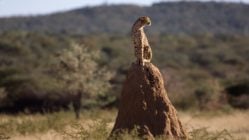
Okonjima Nature Reserve
Enjoy unrivalled game viewing experiences at Okonjima Nature Reserve. It is arguably one of the best places to spot predators in Namibia. Head out on exhilarating game drives and nature trails to track Big Cats that have been rehabilitated by the AfriCat foundation.
Discover more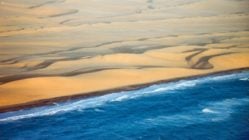
The Skeleton Coast
The Skeleton Coast offers varied landscapes of lengthy beaches, towering sand dunes, secret rivers and mesmerising canyons. Board a flying safari to spot on the skeletal remains of vessels and large concentrations of seal colonies.
Discover more
Sossusvlei
With some of the most surreal landscapes on the planet, Sossusvlei is known for its rust-coloured ridges of sand and mosaics of cracked clay soil. It is located in the Namib-Naukluft National Park and is one of the oldest and driest ecosystems on the planet.
Discover more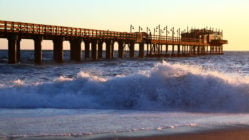
Swakopmund and Walvis Bay
These two towns are located between the Namib Desert and Skeleton Coast and are the ideal base to explore the natural wonders of the region. Adventure sports are some of the best things to do in Swakopmund and Walvis Bay.
Discover more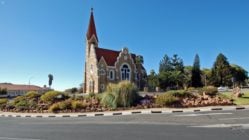
Windhoek
Namibia’s vibrant capital city, Windhoek is an interesting gateway to the rest of the country. The city is dotted with fascinating buildings that look like they belong in northern Europe. ake a walking city tour to learn more about its dynamic history and rich culture.
Discover moreMeet your safari experts
When to visit
The best time to visit Etosha National Park is during the dry winter season which runs from May to September. This is the best time for game viewing as animals congregate at the limited water sources. The wet season, January to March, is a great time for bird spotting, with January and February being particularly good.

Bird Watching
January – February

Wet Season
January – March

Dry Season
May – September
Plan your trip to Etosha National Park
Whatever you want from your adventure in Etosha National Park, our team of expert travel designers are ready to help.
The trip was amazing ! Jody did a great job Of organizing everything and went over and above for making my big birthday special! Will recommend Jody and macadamia to everyone planning a trip to Namibia!
Our experience was top notch from start to finish!! The travel, camps, food, excursions, guides, accommodations, and hosts all deserve 5 stars. All of our exceptions of the trip were blown out of the water. We not only loved seeing Namibia, but we learned so much along the way. Our guides at every camp were truly ambassadors for their country…
Jacada provided impeccable customer service for our trip to Namibia for our ten year anniversary. Our amazing trip designer Jacob Maahs was super brilliant in the itinerary he created for us, and he pulled it off at the very last minute (we are bad planners). He was a true pleasure to work with and I would trust him with any…
Jacada is beyond incredible and we look forward to planning future adventures with them. Our experience was flawless from beginning to end. Iain listened to our dream trip ideas and came up with a bucket list itinerary to Namibia, Zambia, Zimbabwe, and Botswana. James took over and guided us with his amazing care til departure. Such peace during our travels…
We have traveled extensively with many companies, just came back from Namibia and South Africa Jacada's services, concierge, and personalization of our travel plans was flawless. The specifics and attention to detail was incredible from arrival to the airports assisting through customs and immigration,chartered flights, wilderness lodges, local touring and guides was spectacular. We appreciate the entire team , and…
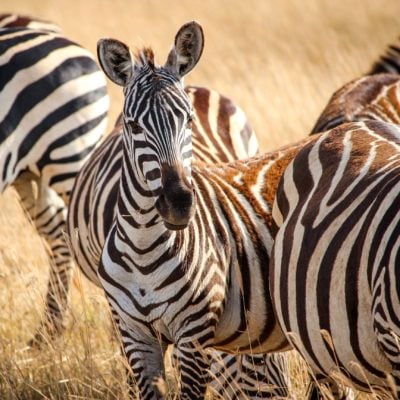
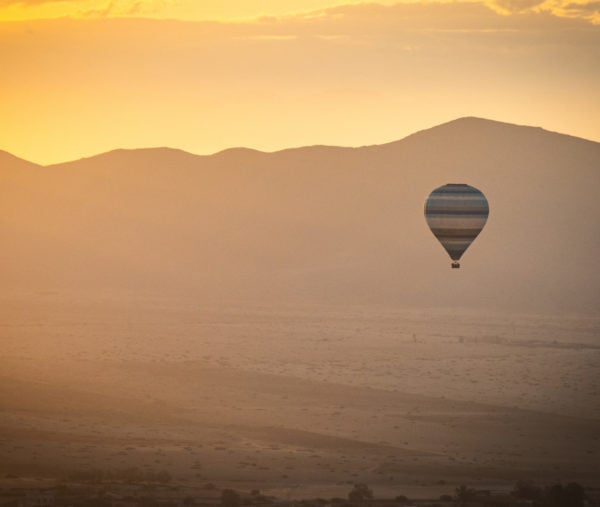
Plan with peace of mind
When you book a trip in today’s world there’s a lot to think about. But with the right advice and expert planning, you can do it with confidence.
If you book to travel with us but your plans are impacted by circumstances you can’t control, we’ll change your reservation or cancel your booking for a full credit towards future travel.




